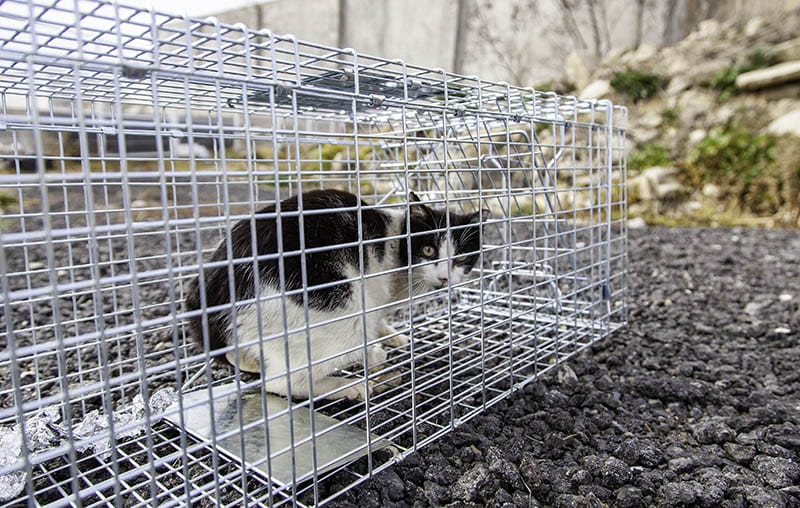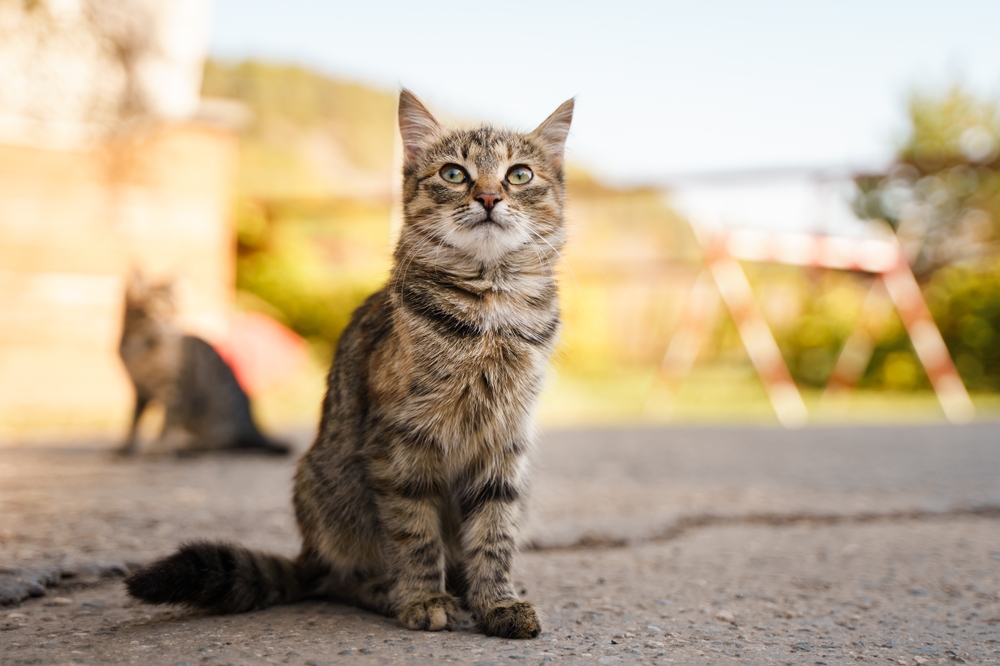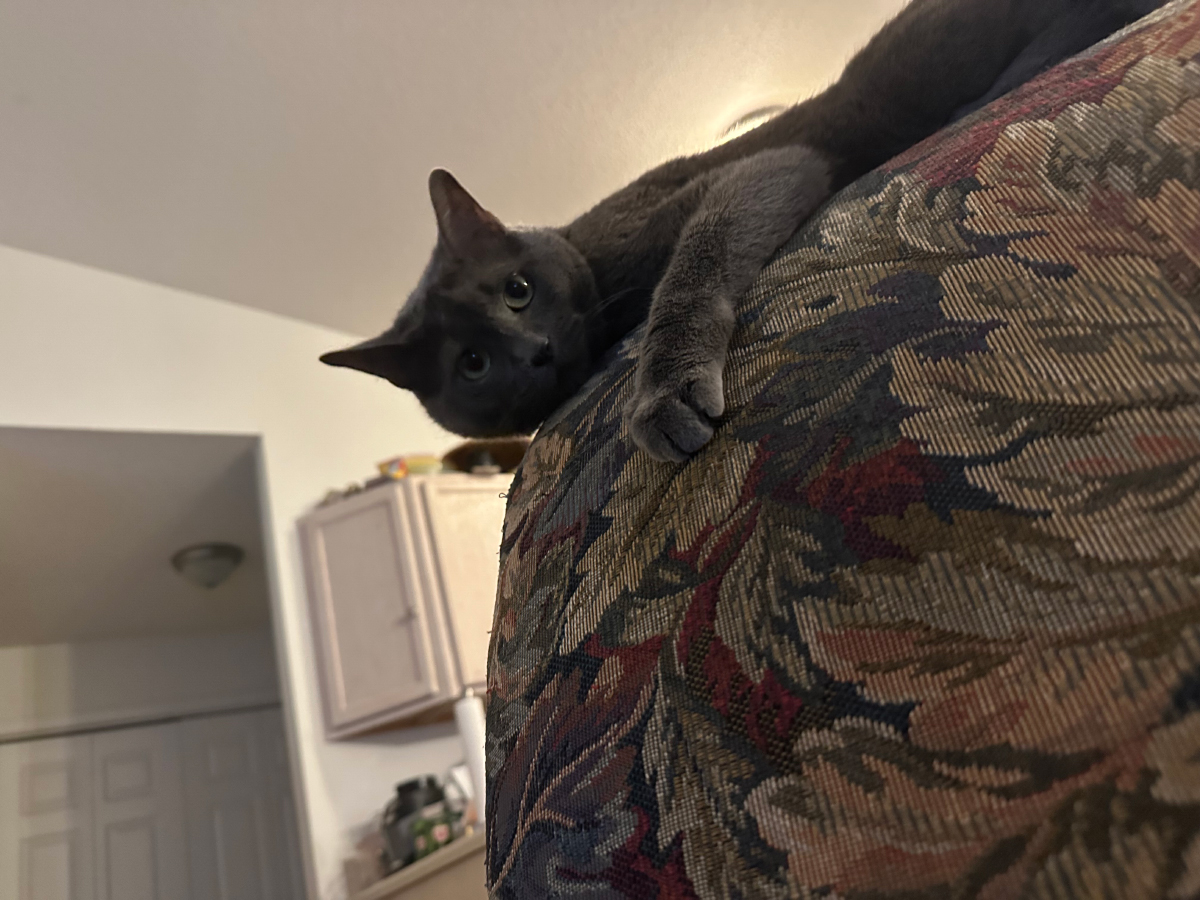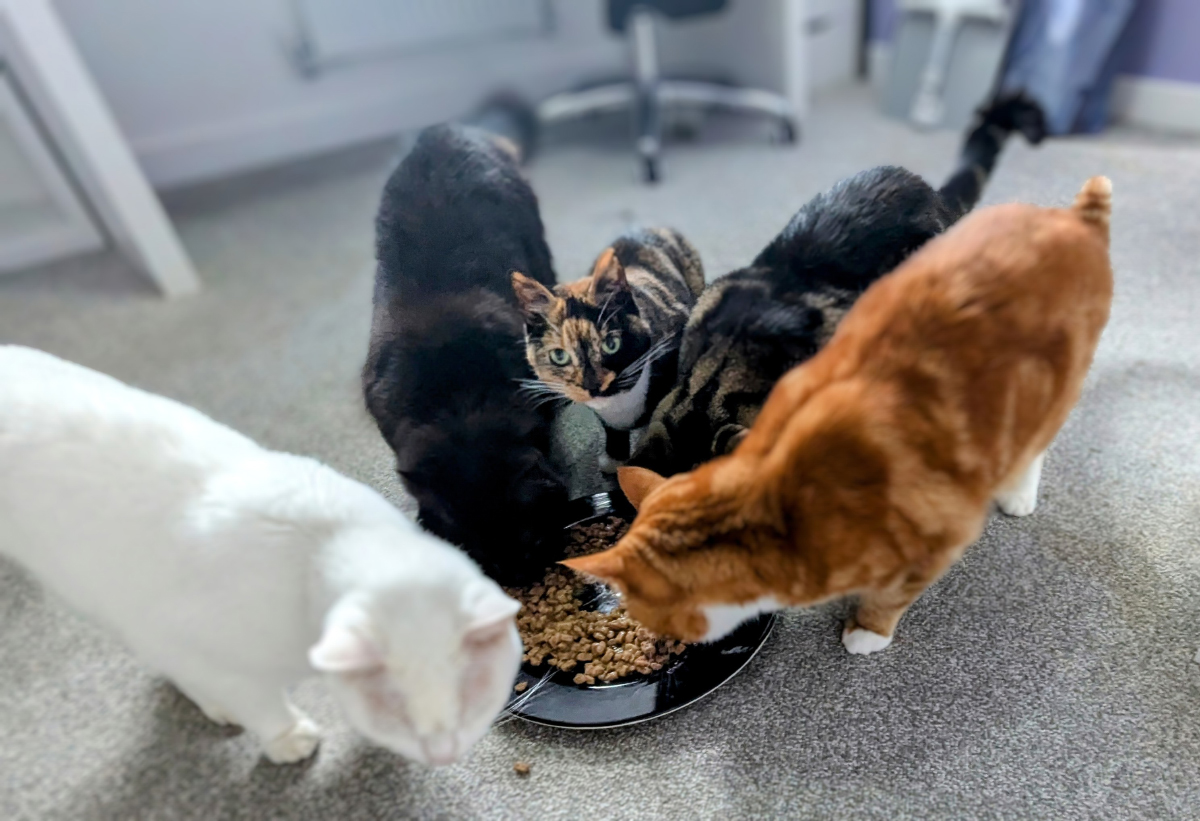Not everyone likes cats, and it’s understandable if you don’t want any kind of animal on your property. Trapping them might be a convenient way of removing cats from your property, but it’s not always easy nor is it always legal. Many states have laws against trapping pet cats, and it’s also heartbreaking for the owners of the pets that you’ve removed.
This guide explores the legality of trapping cats and alternative ways to cat-proof your garden.
Can You Legally Trap Cats on Your Property?
Maybe you like feeding the local birds but can’t because the neighbor’s cat is always perched on the fence. Perhaps the community cats keep ripping apart your carefully tended garden to relieve themselves. Since fences aren’t working, your next solution might be to trap the cats and remove them that way.
Unfortunately, trapping cats isn’t always as easy as it sounds. There are several factors to keep in mind, including the type of trap that you’re allowed to use and whether you need a permit to trap animals.
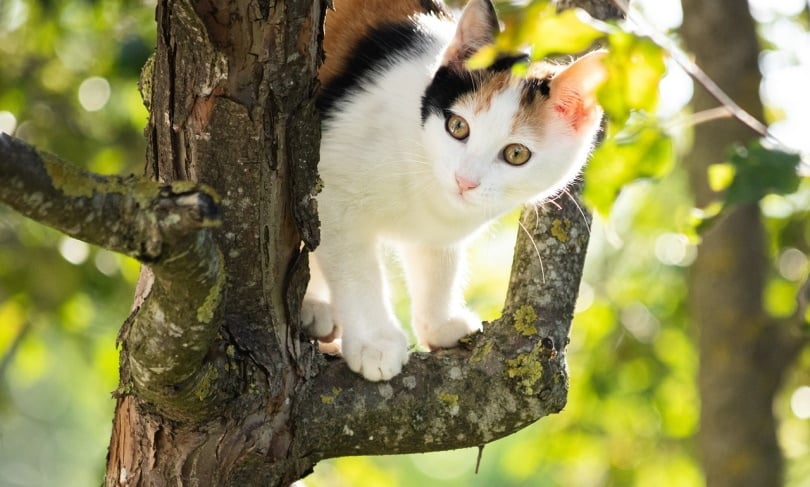
State Law
Even if a cat is trespassing on your property, you still need to abide by the laws in your state when it comes to trapping animals. Some places might not have a problem with you trapping cats, but others have many restrictions. Your local government will take the state legislation into account when making ordinances, including for anti-cruelty, abandonment, trap-neuter-return (TNR) programs, and animal shelters.
Look up the legislation about trapping animals in your state. This will tell you which traps you can use, if any, and whether it’s illegal to trap pets. Some states might require you to call animal control to deal with the animal instead.
The state will also have laws about abandoning pets. In many cases, abandoning animals is illegal. If you’re trapping the cat to take it somewhere else and leave it there, you’ll be breaking the law.
Feral Cats
Even if none of your neighbors owns cats, you’ll likely still have cats wandering around. Feral cats or strays live on the streets and will scavenge for food anywhere they can, including your garden.
While your neighbors might feed the community cats, feral cats aren’t domesticated and don’t belong to anyone. This might make it sound like trapping them is fine, but you have to consider that a feral cat does have a home; it’s just somewhere outside. If they look well-fed and healthy, they’ve made their home in a safe place that has ample access to food.
This is why TNR programs re-release the cats where they were found. There might be laws against abandoning animals, but releasing a cat back into an area that they’re familiar with and thriving in gives them the best chance at continued survival. It also prevents shelters from being overrun.
Although you can take a feral cat to a shelter or a facility taking part in the TNR program, if you trap a feral cat with a tipped ear, you’ll be expected to let them go unless they’re injured. The tipped ear—when the tip of the ear is cut off—is a sign that the cat has already been through the TNR program and is spayed/neutered and vaccinated.
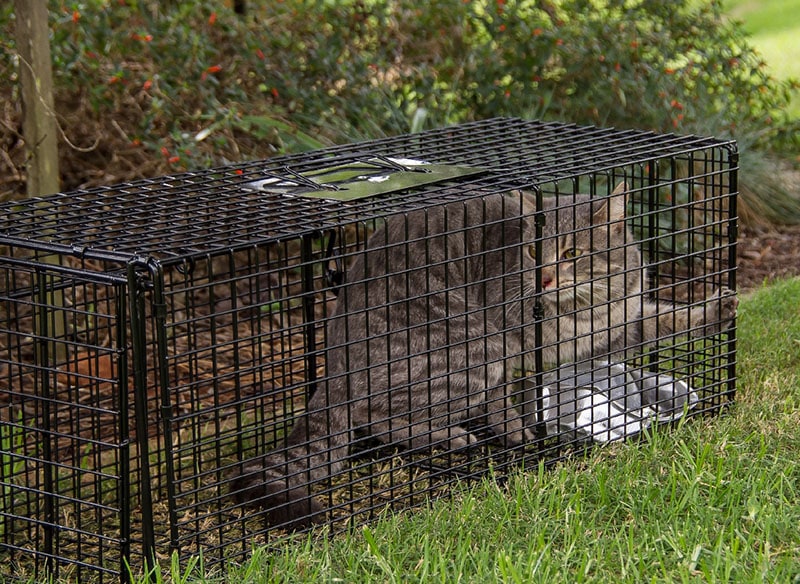
Pet Cats
The biggest problem with trapping cats is that there’s no way to set a trap so it only springs shut on strays. Being an “outdoor” cat doesn’t automatically mean they don’t have a home; they could be a beloved pet that spends the rest of their time cuddled up on a couch or their person’s lap.
This means that a trap that you set in your garden might capture your neighbor’s cat instead of a feral one. You also have to keep in mind that it’s illegal to trap pets in certain areas.
While it’s harder to trap a well-fed animal, which pet cats generally are, it is still possible. Before you consider setting up a trap, make sure it’s not your neighbor’s pet that is invading your space. If the cat looks well-fed and healthy, they likely belong to someone who will worry if they go missing.
6 Useful Methods on How to Keep Cats Out of Your Garden
Outdoor cats will wander wherever they want, and trapping them isn’t likely to deter them for long. If you trap a feral or a pet cat, they’ll just return to your garden again once they’re back home. Instead of using traps, consider making your garden less appealing to pet cats and the strays in your neighborhood.
1. Texture

As fussy animals, cats can be easily put off if they dislike the texture of something. Making your garden less appealing by adding a few things to make the soil less soft takes a bit of thought, but it can be effective. It’s also a safe, humane way of deterring cats. Solutions that people have tried include:
- Pinecones
- Stone, sharp, straw, or cedar mulch
- Plastic netting
- Eggshells
2. Scents

Different scents are a relatively easy way to safely deter cats from visiting your garden or pooping in your vegetable patch. You can purchase cat deterrent sprays from pet stores, make your own at home, or plant strong-smelling flowers that cats dislike.
Be careful about which scents that you use to protect your garden, though. Many common deterrents, like mothballs, are toxic to animals. Some deterrents can also be harmful to the environment and people—especially children—so make sure the scents that you use are 100% safe for everyone.
Safe scents you can use that cats frequently avoid are:
- Mustard powder
- Fox urine
- Cayenne pepper
- Black pepper
- Used coffee grounds or tea leaves
- Citrus
- Lavender
3. Motion-Activated Sprinklers

It might take a bit of setting up, but motion-activated sprinklers can be a good solution. Cats have a natural dislike of water, especially when it’s sprayed on them. Although it’s a controversial training tool for cat owners themselves, it can be used as a deterrent if you don’t want cats sneaking into your garden.
Motion-activated sprinklers also work to deter other animals that might trespass in your yard.
4. Ultrasonic Deterrents

A popular but expensive solution is to use an ultrasonic deterrent. This method relies on sound waves to harmlessly repel cats from your property and is frequently used against animals like rodents, raccoons, or opossums. These devices won’t stop feline visits entirely, but they can reduce their frequency and convince the animals to leave.
It’s a simple but humane way to keep animals away.
5. Cat-Friendly Areas
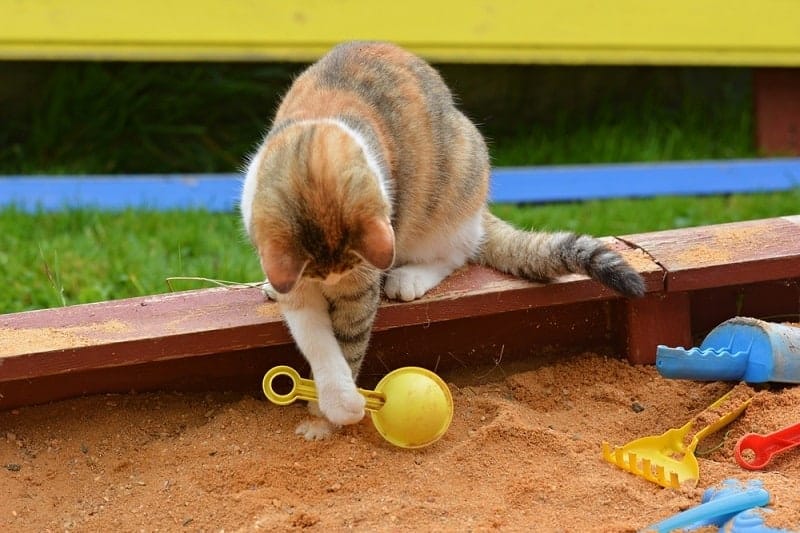
It sounds counterintuitive, but setting up a dedicated cat space in your garden is a possible solution. Create a spot that cats are bound to adore, such as a sandbox full of loose earth for them to do their business in or a patch of catnip in a nice sunny spot.
This won’t stop cats from visiting your garden, but it can help to contain them in one place. By creating a comfortable spot for a cat and using deterrents where you don’t want them to go, they’ll be more likely to leave your other plants alone.
6. Neighbor Discussions

If you know that your neighbor lets their cat roam outdoors, the simplest solution is to talk to them about it. They may be able to convince their cat to stay in their own yard, or you can talk to them about keeping their cat indoors.
Look into ways of turning an outdoor cat into a house cat, and discuss the positives with your neighbor. You’ll need to accept their decision regardless, but you can at least talk to them about considering it.
Conclusion
Not every cat owner likes to keep their cat indoors, and many of them let their cats wander outside. If there are feral cats in the neighborhood too, it can feel like cats are invading your property.
Trapping cats and removing them that way is one solution, but it’s also illegal in many areas, especially if it’s a pet that you’re trapping. If you’re taking part in a TNR program, make sure that the feral cat doesn’t have a tipped ear and that you return them where you found them.
For healthy, uninjured, and well-fed cats, it’s best if you leave them alone and use humane methods to deter cats away from your garden.
Featured Image Credit: Celiafoto, Shutterstock

